The Science Behind Coffee Grinds
Coffee grinds aren't just a fleeting step in your morning ritual; they represent a crucial element of brewing that balances science and art. Whether using a manual coffee grinder or an electric coffee grinder, each method affects the grind's consistency, impacting how water extracts the flavors. Different brewing methods call for specific grind sizes, from the fine grains needed for the best coffee grind for espresso to the chunky particles required for a coarse coffee grind. Each adjustment in grind size alters the brew's potency, aroma, and taste, turning a simple act into a precise science that aligns with your taste preferences.

Coffee Bean Composition
Understanding the composition of coffee beans is essential in unlocking the perfect cup of coffee. As you go into the scientific elements within each bean, you'll discover that they are made up of carbohydrates, proteins, oils, and aromatic compounds. These components collectively influence the flavor profile, aroma, and overall quality of the ground coffee.
One common question is about how these compositions affect the grind size. You may be surprised to learn that the oil and moisture content in coffee beans can change based on the roast level, which in turn affects how easily they grind. This variance necessitates adjustments when using a manual coffee grinder or an electric coffee grinder, ensuring you achieve the best results.
As you’re grinding coffee beans, the type of grind you select plays a vital role. The best coffee grind for espresso is typically very fine to ensure optimal extraction of flavor within a short brew time. Conversely, a coarse coffee grind slows extraction, making it ideal for methods like French press, where prolonged contact with water enhances the taste.
In essence, comprehending the coffee bean’s intricate composition can guide you to choose the appropriate grind size, enriching your coffee experience and elevating the journey from bean to cup.
The Importance of Grind Size
The grind size of your coffee is more crucial than you might initially think. It dictates the rate at which water interacts with ground coffee, influencing the extraction time and impacting the flavor. Different brewing methods require specific grind sizes to perfect the balance of taste and aroma. Understanding these nuances can elevate your coffee-making experience to new heights.
To truly appreciate the science of grinding coffee beans, you need to transcend the notion that one-size-fits-all. Shifting from assuming a single grind size is adequate for all brews to recognizing the unique demands of each method, you’ll unlock richer flavors. For example, the best coffee grind for espresso is markedly finer compared to the coarse coffee grind preferred for cold brew.
When using a manual coffee grinder or an electric coffee grinder, your preference for grind size will determine the brew's character. Coarse grinds are ideal for a fuller, slower extraction process, while finer grinds enhance intensity by quickening extraction. Each decision enriches your control over the final cup, ensuring your beverage is perfectly suited to your preferences.

Brewing Techniques and Their Influence
Brewing techniques have evolved over centuries, each bringing its distinct influence on how ground coffee is transformed into a delightful beverage. Whether you're embracing the rich and bold standards of espresso or the slow, immersive extraction of a French press, the grind size plays a pivotal role. Using a Manual coffee grinder or an electric coffee grinder, each brew method tailors the grind size, affecting the overall flavor profile and intensity.
Tracing the evolution from the 15th century, when coffee brewing began in the Arabian Peninsula, various methods have emerged, each characterized by its unique requirements. The best coffee grind for espresso demands a fine consistency to allow high-pressure water to burst through the coffee, capturing intense flavors quickly. On the other hand, a coarse coffee grind works best for methods like cold brew, where extended steeping allows for a slower, thorough extraction of flavors, delivering a smoother taste.
As you explore these diverse techniques, consider how the chemistry of grinding coffee beans affects your brew. Turkish coffee, known for its ultra-fine grind, has been a staple since the Ottoman Empire, highlighting the grind's critical influence. Varying these techniques offers a personalized experience, each shift providing new insights into the complex flavor world that coffee can offer, tailored precisely through the size and type of your grind.
Grinding Methods and Their Differences
The choice between grinding methods significantly impacts the quality and taste of your coffee. When using a manual coffee grinder, you gain control over the grind size, allowing for an intimate connection with the coffee-making process. The tactile experience may improve your understanding of how grind size affects brewing, making it ideal for those enjoying the nuances of different blends and flavors.
With an electric coffee grinder, convenience and speed come to the fore. This method allows you to consistently produce ground coffee with just the push of a button, often offering programmable settings for various grind sizes. This can be especially beneficial when aiming for the best coffee grind for espresso, which necessitates precision and uniformity to ensure a rich, robust flavor.
To enhance your coffee experience, consider adjusting your grinding method based on your brewing technique. Experimenting with a coarser coffee grind in a manual grinder for French press coffee can lead to a fuller-bodied taste, while utilizing an electric grinder for fine espresso grinds ensures swift and consistent results. Striking a balance between these methods according to your preferences can truly personalize your coffee ritual.

Storing Coffee Grinds for Maximum Freshness
Storing coffee grinds properly is essential to preserving their freshness and flavor. Exposure to air, moisture, and light can degrade the quality of your ground coffee. To maintain your coffee's aroma and taste, it's best to store it in an airtight container, placing it in a cool, dark place. This simple step helps protect the intricate oils and compounds that give coffee its unique character.
What most people don’t see about coffee storage is the delicate balance of preserving aroma and removing excess air. For those grinding coffee beans at home with a manual coffee grinder or an electric coffee grinder, storing them right after grinding locks in freshness. This behind-the-scenes detail can mean the difference between a vibrant cup and a lackluster brew.
To make the most of coffee that's been ground for specific purposes, such as a coarse coffee grind for a French press or the best coffee grind for espresso, consider splitting the batch into smaller portions. This reduces the need to frequently open the container, minimizing exposure to air. By carefully storing your grinds, you ensure every cup you brew is as flavorful as intended, reflecting the artful science of coffee making.
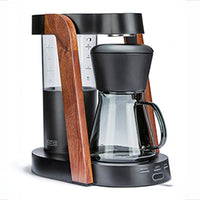 Ratio Eight S2
Ratio Eight S2
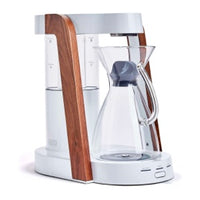 Ratio Eight Original
Ratio Eight Original
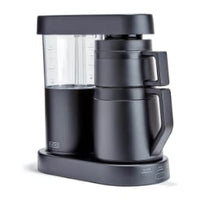 Ratio Six
Ratio Six
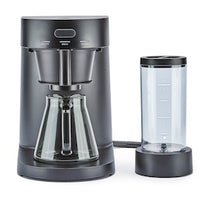 Ratio Four
Ratio Four
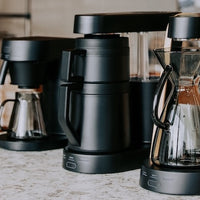 Compare Machines
Compare Machines






